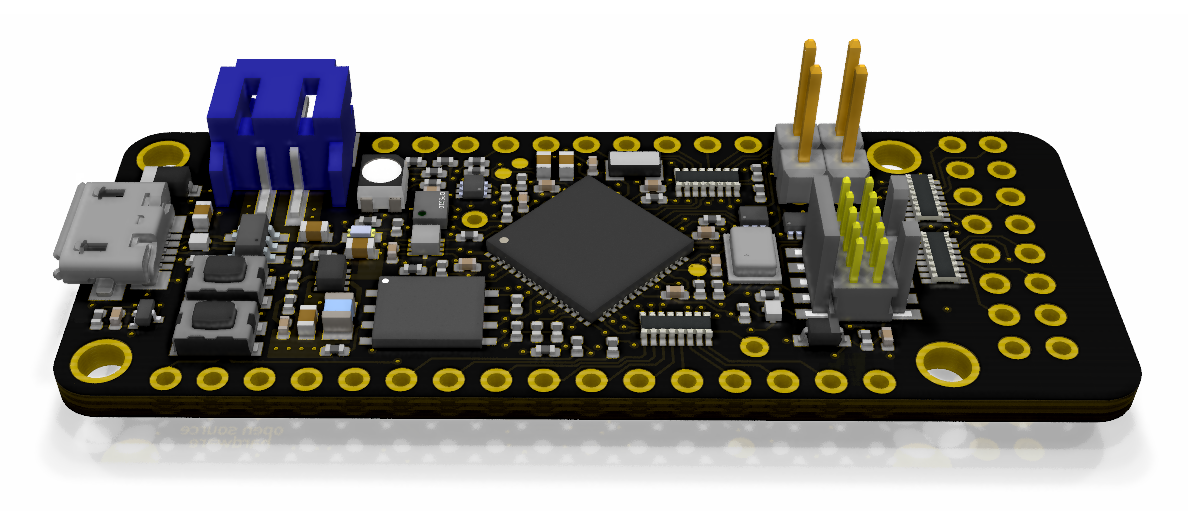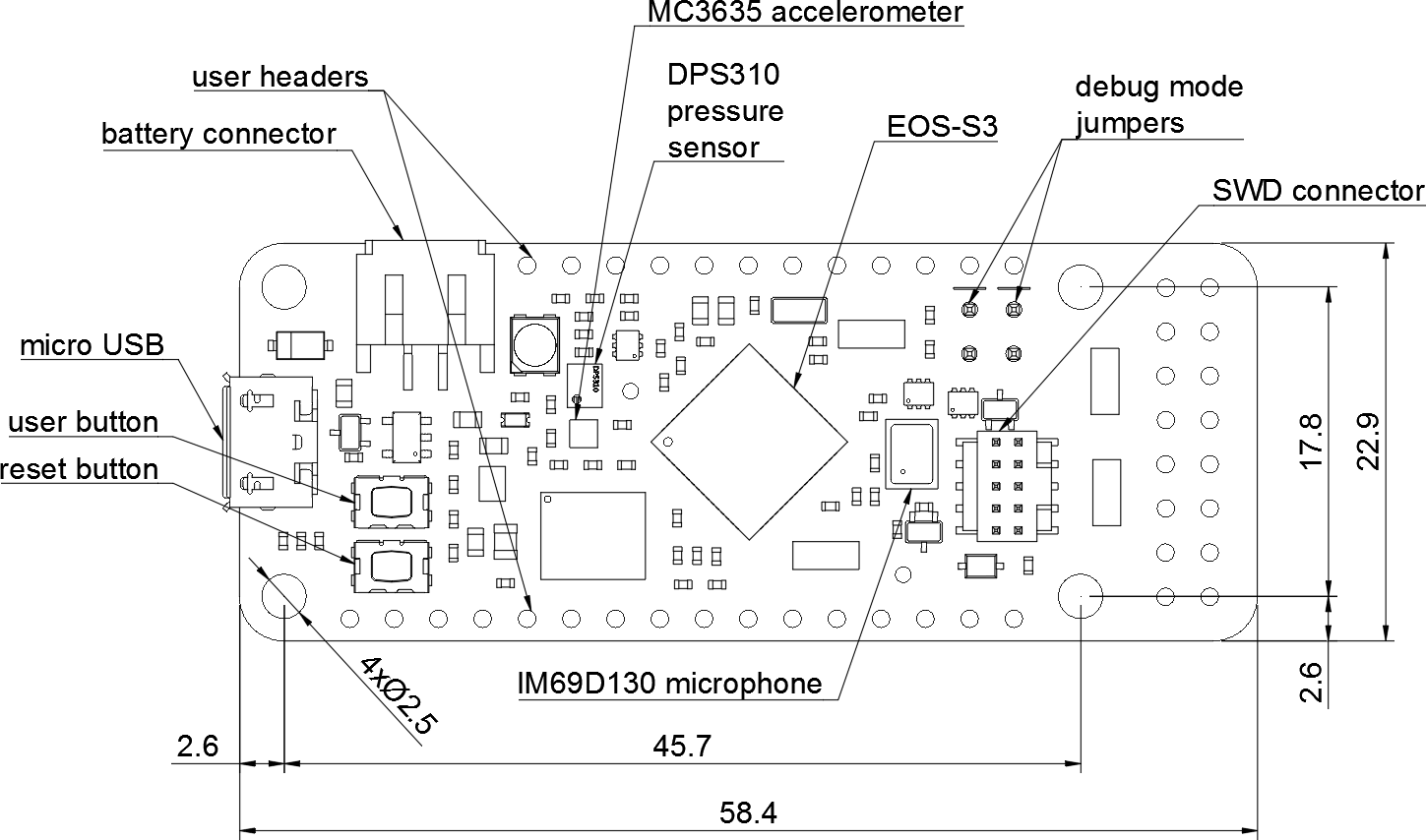This repository contains open hardware design files for the QuickFeather development board based on the QuickLogic EOS S3 Sensor Processing Platform. The design files were created by Antmicro in cooperation with QuickLogic. The board has been designed to keep compatibility with the Adafruit Feather ecosystem of evaluation boards. This allows the user to explore functionalities of the EOS S3 platform.
The QuickFeather_UserGuide contains instructions for running the pre-installed example program.
- QuickLogic EOS S3 Processing Platform
- mCube MC3635 accelerometer
- Infineon DPS310 pressure sensor
- Infineon IM69D130 MEMS microphone
- 16Mbit of on-board flash memory
- User button and RGB LED
- Powered from USB or a single Li-Po battery
- Integrated battery charger
- USB data signals tied to programmable logic
- IO signals break-routed into general purpose pinheads
- Compatible with standard 0.1" breadboards
The board is supported in Renode, the open source simulation framework by Antmicro - you can run a virtual copy of this hardware for software development purposes on your PC. A link to the relevant demo script is provided in Renode's supported boards section.
Connect the micro-usb port of the board to the PC, which will both provide power to the board as well as offer a virtual USB-CDC UART port out of the box.
For using the board with advanced scenarios, such as loading a custom FPGA image, an additional dedicated USB-UART board (for example based on the PL2303, FT232 etc.) needs to be connected to the QuickFeather UART pins, as shown below:
+--------------------------+ +--------------+ | QF UART RX(IO_45) [J3.3] +-------->+ USB-UART TX | | | | | | | | | | QF UART TX(IO_44) [J3.2] +-------->+ USB-UART RX | | | | | | | | | | QF GND (GND) [J3.1] +-------->+ USB-UART GND | +--------------------------+ +--------------+
Refer to QuickFeather_UserGuide for further details

